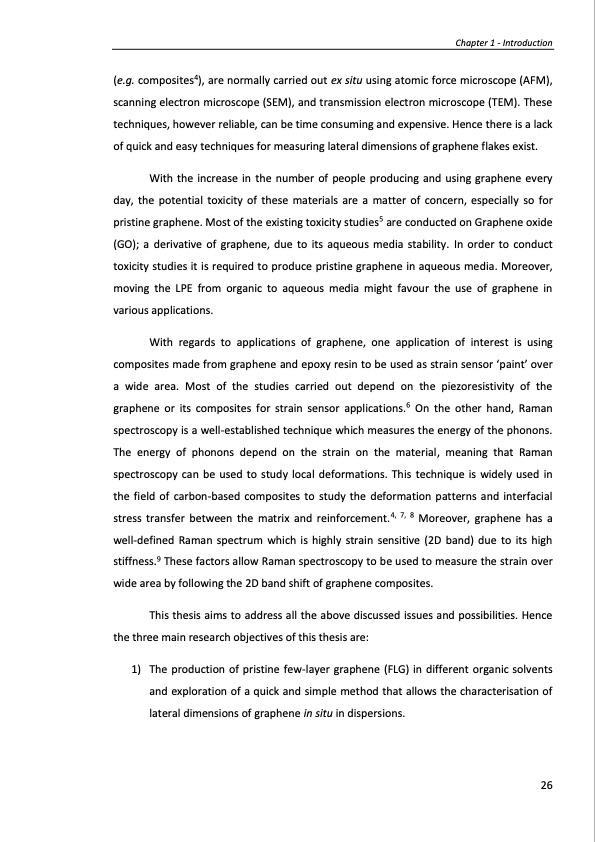PDF Publication Title:
Text from PDF Page: 026
(e.g. composites4), are normally carried out ex situ using atomic force microscope (AFM), scanning electron microscope (SEM), and transmission electron microscope (TEM). These techniques, however reliable, can be time consuming and expensive. Hence there is a lack of quick and easy techniques for measuring lateral dimensions of graphene flakes exist. With the increase in the number of people producing and using graphene every day, the potential toxicity of these materials are a matter of concern, especially so for pristine graphene. Most of the existing toxicity studies5 are conducted on Graphene oxide (GO); a derivative of graphene, due to its aqueous media stability. In order to conduct toxicity studies it is required to produce pristine graphene in aqueous media. Moreover, moving the LPE from organic to aqueous media might favour the use of graphene in various applications. With regards to applications of graphene, one application of interest is using composites made from graphene and epoxy resin to be used as strain sensor ‘paint’ over a wide area. Most of the studies carried out depend on the piezoresistivity of the graphene or its composites for strain sensor applications.6 On the other hand, Raman spectroscopy is a well-established technique which measures the energy of the phonons. The energy of phonons depend on the strain on the material, meaning that Raman spectroscopy can be used to study local deformations. This technique is widely used in the field of carbon-based composites to study the deformation patterns and interfacial stress transfer between the matrix and reinforcement.4, 7, 8 Moreover, graphene has a well-defined Raman spectrum which is highly strain sensitive (2D band) due to its high stiffness.9 These factors allow Raman spectroscopy to be used to measure the strain over wide area by following the 2D band shift of graphene composites. This thesis aims to address all the above discussed issues and possibilities. Hence the three main research objectives of this thesis are: 1) The production of pristine few-layer graphene (FLG) in different organic solvents and exploration of a quick and simple method that allows the characterisation of lateral dimensions of graphene in situ in dispersions. Chapter 1 - Introduction 26PDF Image | PRODUCTION AND APPLICATIONS OF GRAPHENE AND ITS COMPOSITES

PDF Search Title:
PRODUCTION AND APPLICATIONS OF GRAPHENE AND ITS COMPOSITESOriginal File Name Searched:
graphene-production-applications.PDFDIY PDF Search: Google It | Yahoo | Bing
Salgenx Redox Flow Battery Technology: Power up your energy storage game with Salgenx Salt Water Battery. With its advanced technology, the flow battery provides reliable, scalable, and sustainable energy storage for utility-scale projects. Upgrade to a Salgenx flow battery today and take control of your energy future.
CONTACT TEL: 608-238-6001 Email: greg@infinityturbine.com (Standard Web Page)